 If you haven’t already seen the fabulous Make: technology magazine, we suggest you toddle over to their Website to get a flavour of what’s on offer.
If you haven’t already seen the fabulous Make: technology magazine, we suggest you toddle over to their Website to get a flavour of what’s on offer.
The modern-day equivalent of a virtual granddad’s shed, this US-based magazine comes stuffed with loads of hand-on projects to keep soldering iron-totin’ geezers in fiddling about Heaven.
Although the mag is a pricy fella – around ten quid an issue in UK shops – it’s well worth the outlay for the offering of top tech tips, great stories, step-by-step ‘build your own’ guides, mad projects and other such eclectic treats for electronics dabblers.
Projects range from the fascinating to the useful to the plain daft, including instructions on how to make a, “dashboard mount for your mobile phone from an old hard-drive and a tuna can,” a “GPS bike mount for free,” a “wooden match rocket”, and – perfect for festival goers – a “camping lighting/sound system.”
 The projects require varying levels of technical know-how and competence, but the down to earth writing style and clear illustrations should get you reaching for your tool kit in double quick time – or provide an engrossing read at the very least.
The projects require varying levels of technical know-how and competence, but the down to earth writing style and clear illustrations should get you reaching for your tool kit in double quick time – or provide an engrossing read at the very least.
The accompanying Website includes many of the projects featured in the magazines, with a busy user forum letting readers get involved, pick up tips, ask questions or offer their own projects.
Now up to volume 6, you can track down the magazine in bigger newsagents or order them from the Website, where back issues can be picked up for $15 a pop (a US subscription of four issues is priced at $35, but no doubt us Britlanders will end up paying a hefty premium once shipping costs are piled on top).
 We like Make: a lot. It’s fun, informative, wittily written and although it’s primarily aimed at adults, it’s a great way to get teenagers interested in science – even if some of the projects are more about having fun than pushing the envelope of science!
We like Make: a lot. It’s fun, informative, wittily written and although it’s primarily aimed at adults, it’s a great way to get teenagers interested in science – even if some of the projects are more about having fun than pushing the envelope of science!
Volume 07 should be available in late August and will offer features on “Hack your plants, extract your DNA, 70’s soapbox saga, build a videocam rocket, and head-mounted water cannon.”
And if that lot doesn’t tempt you, we don’t know what will.
Score: 90%
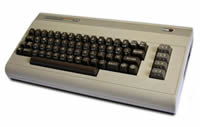 How fantastic is this? A couple of turbo-code monkeys have written a Commodore 64 (C64) emulator that runs within Flash on a Web browser.
How fantastic is this? A couple of turbo-code monkeys have written a Commodore 64 (C64) emulator that runs within Flash on a Web browser.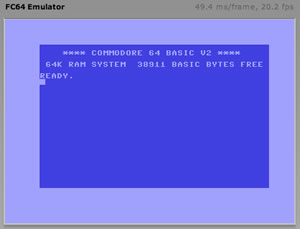 MAME was a huge revelation when it first arrived, letting users load up the ROM sets from old arcade machine and play them as if it was on the original hardware.
MAME was a huge revelation when it first arrived, letting users load up the ROM sets from old arcade machine and play them as if it was on the original hardware.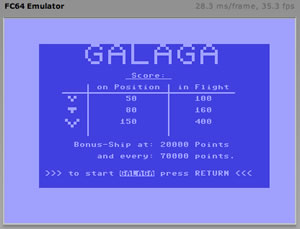 All of the emulators are a clear demonstration that the power of hardware has increased tremendously.
All of the emulators are a clear demonstration that the power of hardware has increased tremendously. Most GPS enabled watches we’ve seen so far have been so ridiculously chunky that you’d need the muscles of Mick McManus to stop your arm dragging to the floor under the weight.
Most GPS enabled watches we’ve seen so far have been so ridiculously chunky that you’d need the muscles of Mick McManus to stop your arm dragging to the floor under the weight. Despite its GPS abilities, the watch can’t display maps or offer latitude or longitude information on its tiny 49×72 full dot LCD screen, so there’s no chance of the bleeping t’ing guiding us home after a heavy session in the pub.
Despite its GPS abilities, the watch can’t display maps or offer latitude or longitude information on its tiny 49×72 full dot LCD screen, so there’s no chance of the bleeping t’ing guiding us home after a heavy session in the pub. Despite increased pixel counts rapidly reaching the wall of diminishing returns for consumers, Pentax have joined the trend for beefing up the megapixel ratings with their new Optio A20 compact digital camera.
Despite increased pixel counts rapidly reaching the wall of diminishing returns for consumers, Pentax have joined the trend for beefing up the megapixel ratings with their new Optio A20 compact digital camera.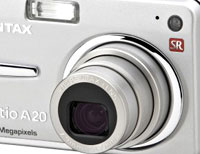 The Optio A20’s auto-tracking AF feature should help doting mothers grab photos of their little darlings as they run into walls, with the focus frame automatically following the movement of the subject inside the photo frame.
The Optio A20’s auto-tracking AF feature should help doting mothers grab photos of their little darlings as they run into walls, with the focus frame automatically following the movement of the subject inside the photo frame. Unspam Technologies has announced the launch of a new website – lostinthecrowd.org – that sneakily helps keep Web searches private.
Unspam Technologies has announced the launch of a new website – lostinthecrowd.org – that sneakily helps keep Web searches private.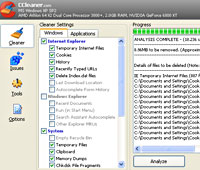 Of course, routinely clearing the cookies from your browser is the safest option, but Lost in the Crowd takes a different approach by automatically placing random queries through the search engines you use from your tracking cookie.
Of course, routinely clearing the cookies from your browser is the safest option, but Lost in the Crowd takes a different approach by automatically placing random queries through the search engines you use from your tracking cookie. Langheinrich said that Unspam has no intention of making any money out of the service, citing that the site’s sole purpose was to focus people to the issue of online privacy.
Langheinrich said that Unspam has no intention of making any money out of the service, citing that the site’s sole purpose was to focus people to the issue of online privacy. Inanimate Alice is a story about a games developer called Alice created by Kate Pullinger, Ian Harper & Chris Joseph. The story tells of her childhood and how she created and played games as she grew up in different countries around the world. Inanimate Alice a multi part episodic, interactive game which is available online at
Inanimate Alice is a story about a games developer called Alice created by Kate Pullinger, Ian Harper & Chris Joseph. The story tells of her childhood and how she created and played games as she grew up in different countries around the world. Inanimate Alice a multi part episodic, interactive game which is available online at  In a question and answer session the trio revealed that the project is aimed at the widest possible audience (especially non-gamers) but is currently most popular amongst 16-35 year old females.
In a question and answer session the trio revealed that the project is aimed at the widest possible audience (especially non-gamers) but is currently most popular amongst 16-35 year old females. Sky TV has a strong market presence in providing big screen football to the drinking public in licensed premises in the UK. This virtual monopoly has long been a bone of contention for ‘Mine Hosts’ keen to encourage soccer imbibers to their premises for the big games, but over a proverbial barrel in terms of the price they have to pay.
Sky TV has a strong market presence in providing big screen football to the drinking public in licensed premises in the UK. This virtual monopoly has long been a bone of contention for ‘Mine Hosts’ keen to encourage soccer imbibers to their premises for the big games, but over a proverbial barrel in terms of the price they have to pay. Greek, Czech and Arabic satellite TV channels have signed up with the UK’s Premier League for coverage of the UK’s beautiful game, and the deal they have is at a much better price (as we’d expect), than the one Sky negotiated, in what is a competitive market for commercial coverage of the national game.
Greek, Czech and Arabic satellite TV channels have signed up with the UK’s Premier League for coverage of the UK’s beautiful game, and the deal they have is at a much better price (as we’d expect), than the one Sky negotiated, in what is a competitive market for commercial coverage of the national game.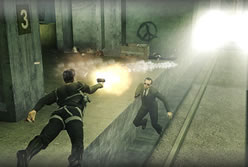 The second day of EIEF got underway with seminar on media convergence with the first speaker being Rosanna Sun of
The second day of EIEF got underway with seminar on media convergence with the first speaker being Rosanna Sun of 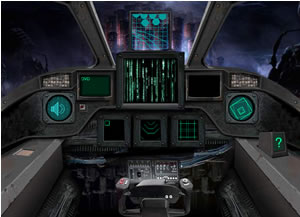 Each different media (movie, games etc) has different production schedules and sharing ‘assets’ amongst them became an enormous scheduling problem. Visual fx shots are typically done last in movies, for games they needed to be ready 6 months prior to launch. This meant some sequences had to be literally re-directed from movie sequences.
Each different media (movie, games etc) has different production schedules and sharing ‘assets’ amongst them became an enormous scheduling problem. Visual fx shots are typically done last in movies, for games they needed to be ready 6 months prior to launch. This meant some sequences had to be literally re-directed from movie sequences.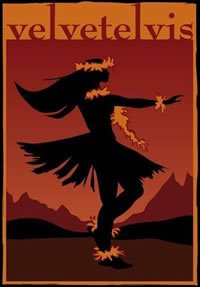 During Q&A
During Q&A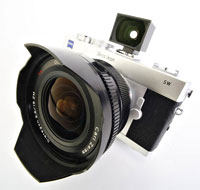 We know that we’re looking at a camera that’s only going to appeal to a tiny niche of photographers, but it’s such a beaut we had to bring it to your attention.
We know that we’re looking at a camera that’s only going to appeal to a tiny niche of photographers, but it’s such a beaut we had to bring it to your attention. Tough as nails
Tough as nails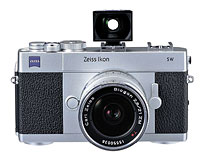 Exposure levels are set via a combination of 3 LEDs which indicate shutter speeds ranging from 1/2000 sec. – 8 sec. in automatic mode (1/2000 – 1 sec. + B in manual mode.)
Exposure levels are set via a combination of 3 LEDs which indicate shutter speeds ranging from 1/2000 sec. – 8 sec. in automatic mode (1/2000 – 1 sec. + B in manual mode.)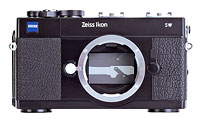 Zeiss Ikon SW SuperWide Camera Specifications
Zeiss Ikon SW SuperWide Camera Specifications Samsung is getting ready to unveil what it reckons is the first 70in HD (high-definition) LCD (liquid crystal display) panel.
Samsung is getting ready to unveil what it reckons is the first 70in HD (high-definition) LCD (liquid crystal display) panel. Executive Vice President Kim Sang-Soo of Samsung Electronics was ready to parp his company’s PR trumpet: “Our new 70-inch LCD is not only significantly larger, but also sets a new benchmark of excellence in terms of video image reproduction, viewing angle and image quality. We’ve designed it to dramatically enhance the large screen LCD TV user’s viewing experience. ”
Executive Vice President Kim Sang-Soo of Samsung Electronics was ready to parp his company’s PR trumpet: “Our new 70-inch LCD is not only significantly larger, but also sets a new benchmark of excellence in terms of video image reproduction, viewing angle and image quality. We’ve designed it to dramatically enhance the large screen LCD TV user’s viewing experience. ”